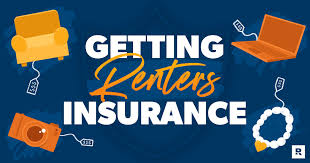Auto insurance is essential for anyone who drives a vehicle. It protects you financially in the event of an accident, theft, or other incidents. However, with various coverage options and factors affecting your premium, it can be challenging to understand exactly what type of auto insurance you need. This article will provide a comprehensive guide to auto insurance, covering its importance, types of coverage, how premiums are determined, and tips for saving money while ensuring you get the best protection.

What is Auto Insurance?
Auto insurance is a contract between you and an insurance company that provides financial protection against damages to your vehicle, injuries to yourself or others, and damages to other people’s property due to an accident. In exchange for paying a premium, the insurance company agrees to cover certain costs as outlined in your policy, which can include repair costs, medical bills, or liability for accidents.
Auto insurance is mandatory in most countries and states, ensuring that all drivers have a minimum level of coverage to protect themselves and others on the road. The required minimum coverage can vary by location, so it’s essential to understand the laws in your area.
Why is Auto Insurance Important?
- Legal Requirement: In most places, auto insurance is legally required for all drivers. Failing to maintain insurance can result in fines, license suspension, or even jail time.
- Financial Protection: Auto insurance helps cover the costs associated with accidents, theft, vandalism, and natural disasters. Without it, you would have to pay for these expenses out-of-pocket, which can quickly add up to a significant financial burden.
- Liability Coverage: Auto insurance protects you from the financial responsibility if you’re at fault in an accident. This includes damage to another person’s vehicle, medical bills, and other costs.
- Peace of Mind: Knowing that you’re covered in case of an accident can give you peace of mind when driving. Whether it’s a minor fender bender or a major collision, having the right insurance helps alleviate the stress of potential financial loss.
Types of Auto Insurance Coverage
Auto insurance policies typically consist of various types of coverage. You can choose from a wide range of options depending on your needs, the value of your vehicle, and your risk tolerance.
1. Liability Insurance
Liability insurance is the most basic and essential type of auto insurance. It is required by law in most states or countries. Liability insurance covers the costs of injuries or damage caused to others in an accident where you are at fault. It consists of two parts:
- Bodily Injury Liability: This covers medical expenses, lost wages, and other costs associated with injuries sustained by others in the accident.
- Property Damage Liability: This pays for the repair or replacement of property damaged in the accident, such as another driver’s vehicle, a fence, or a building.
2. Collision Insurance
Collision insurance covers the repair or replacement of your own vehicle if it is damaged in a collision, regardless of who is at fault. This coverage is essential if you have a newer or valuable vehicle that would be expensive to repair or replace. For older vehicles, collision insurance may not be necessary if the value of the car is low.
3. Comprehensive Insurance
Comprehensive insurance (also called “other than collision”) covers damages to your vehicle caused by non-collision events. This includes theft, vandalism, fire, natural disasters (like floods or earthquakes), falling objects, and animal collisions (such as hitting a deer). If your car is stolen or severely damaged by an event other than a crash, comprehensive insurance can help cover the repair or replacement costs.
4. Personal Injury Protection (PIP)
Personal Injury Protection, also known as no-fault insurance, covers medical expenses for you and your passengers, regardless of who is at fault in an accident. This coverage can also cover lost wages, funeral expenses, and additional costs such as child care or house cleaning services if you’re temporarily unable to perform these tasks due to injuries. PIP is mandatory in some states and optional in others.
5. Uninsured/Underinsured Motorist Coverage
This type of insurance protects you if you’re involved in an accident with a driver who either doesn’t have insurance or doesn’t have enough coverage to pay for the damages. If you’re hit by a hit-and-run driver or someone who doesn’t carry sufficient coverage, uninsured/underinsured motorist coverage will help cover your medical bills, vehicle repair costs, and other related expenses.
6. Gap Insurance
Gap insurance is useful for drivers who owe more on their car loan or lease than the vehicle is worth. If your car is totaled, standard insurance will pay out the current market value, which may be less than the amount you owe. Gap insurance covers the difference, ensuring that you aren’t left with a loan balance after your car is declared a total loss.
7. Roadside Assistance and Rental Reimbursement
Many auto insurance policies offer additional services such as roadside assistance and rental reimbursement. Roadside assistance can help with emergencies like flat tires, dead batteries, or running out of gas. Rental reimbursement covers the cost of a rental car if your vehicle is in the shop for repairs due to a covered accident.
How Are Auto Insurance Premiums Calculated?
Your auto insurance premium is the amount you pay for your policy, usually on a monthly or annual basis. The premium you pay depends on a variety of factors, and understanding these can help you get the best rates.
Factors Affecting Auto Insurance Premiums
- Driving History: If you have a history of accidents, speeding tickets, or traffic violations, your premiums are likely to be higher. Insurers consider drivers with clean records to be less risky and often offer them lower premiums.
- Vehicle Type: The make, model, and year of your car can affect your premium. Luxury, sports, and high-performance cars tend to be more expensive to insure because they cost more to repair or replace. Additionally, cars that are frequently stolen may result in higher premiums.
- Age and Gender: Younger drivers, especially those under 25, typically pay higher premiums due to their higher accident rates. Statistically, male drivers are considered higher risk than female drivers, particularly among young adults.
- Location: Where you live plays a significant role in your premiums. Urban areas with higher traffic and accident rates typically have higher insurance costs. Additionally, locations prone to natural disasters or theft may result in higher rates.
- Credit Score: In many places, your credit score is factored into your auto insurance premium. Drivers with poor credit scores may face higher rates, as insurers view them as higher risk.
- Coverage Level and Deductibles: The more coverage you choose and the lower your deductible, the higher your premiums are likely to be. Opting for higher coverage limits can provide better protection but will increase your premium costs. A higher deductible may lower your premium, but it means you’ll pay more out of pocket in the event of a claim.
- Annual Mileage: If you drive a lot, your risk of being involved in an accident increases, which can lead to higher premiums. Conversely, if you drive less, your premiums may be lower.
Tips for Saving Money on Auto Insurance
While auto insurance is a necessary expense, there are several strategies to help you save money on your premiums without sacrificing coverage.
1. Shop Around and Compare Quotes
Auto insurance rates can vary significantly between providers. It’s important to get quotes from multiple insurance companies to ensure you’re getting the best rate. Comparison websites can make this process faster and more convenient.
2. Take Advantage of Discounts
Most insurers offer discounts that can help lower your premium. Common discounts include:
- Safe driver discounts: For drivers with a clean driving record.
- Multi-policy discounts: For bundling auto insurance with other types of insurance, like homeowners or renters.
- Anti-theft device discounts: For vehicles with installed anti-theft devices.
- Defensive driving course discounts: For completing a safe driving course.
3. Increase Your Deductible
Opting for a higher deductible can lower your monthly premium. However, be sure you can afford the deductible in case you need to file a claim. A balance between premium and deductible is key.
4. Maintain a Good Credit Score
In many states, insurers use your credit score to determine your rates. Maintaining a good credit score can help you qualify for lower premiums. Pay bills on time and manage your credit responsibly.
5. Drive a Car with Lower Insurance Costs
When purchasing a car, consider how much it will cost to insure. Vehicles with lower repair costs, higher safety ratings, and less likelihood of being stolen typically cost less to insure.
6. Review Your Coverage Regularly
As your car ages and its value decreases, you may want to adjust your coverage. If you have an older car, you might want to drop collision or comprehensive insurance to save money, as the cost of repairs may exceed the vehicle’s value.
Conclusion
Auto insurance is a necessary safeguard for all drivers. Understanding the different types of coverage, how premiums are calculated, and how to find the best deals can help you secure the right policy for your needs. By evaluating your vehicle, driving habits, and financial situation, you can make informed decisions to protect yourself, your passengers, and your vehicle, while also saving money on your insurance premiums.
Don’t forget to review your policy regularly to ensure it continues to meet your needs, and always shop around to compare quotes and discounts. Having the right auto insurance coverage gives you peace of mind, knowing that you’re protected in case of an accident or unexpected event.

FAQs About Auto Insurance
1. What is auto insurance?
Auto insurance is a contract between you and an insurance company that provides financial protection in case of an accident, theft, or other incidents involving your vehicle. In exchange for paying a premium, the insurance company agrees to cover certain costs, such as medical bills, vehicle repairs, or property damage.
2. Why do I need auto insurance?
Auto insurance is required by law in most countries and states. It provides financial protection in case of accidents or theft, ensuring you don’t bear the full cost of damages, injuries, or lawsuits. It also gives you peace of mind, knowing you are covered in emergencies on the road.
3. What are the different types of auto insurance coverage?
There are several types of auto insurance coverage, including:
- Liability Insurance: Covers damages and injuries you cause to others in an accident.
- Collision Insurance: Covers the cost of repairs to your own car after a collision.
- Comprehensive Insurance: Covers damages to your vehicle from non-collision events like theft, fire, or natural disasters.
- Personal Injury Protection (PIP): Pays for medical expenses and lost wages for you and your passengers, regardless of fault.
- Uninsured/Underinsured Motorist Coverage: Covers damages if you’re involved in an accident with a driver who has little or no insurance.
- Gap Insurance: Pays the difference between what you owe on your car loan and the current market value of your car if it’s totaled.
4. What factors affect my auto insurance premiums?
Several factors influence the cost of your auto insurance premiums, including:
- Driving history: Previous accidents or violations can increase rates.
- Vehicle type: Expensive, high-performance, or high-theft-risk vehicles often cost more to insure.
- Age and gender: Younger drivers and male drivers tend to have higher premiums due to higher accident rates.
- Location: Living in urban areas with more traffic or higher crime rates can lead to higher premiums.
- Credit score: A lower credit score can result in higher rates.
- Coverage level and deductibles: Higher coverage and lower deductibles typically mean higher premiums.
- Annual mileage: The more you drive, the higher your premiums may be.
5. What is a deductible?
A deductible is the amount of money you agree to pay out of pocket before your insurance policy kicks in to cover the rest of the cost. For example, if you have a $500 deductible and the repair costs are $2,000, you’ll pay $500, and the insurance company will cover the remaining $1,500.
6. Is auto insurance mandatory?
Yes, auto insurance is mandatory in most states and countries. Minimum liability coverage is required by law, although the specifics of required coverage can vary by location. Failing to maintain insurance can result in fines, license suspension, or legal consequences.
7. What is the minimum coverage required for auto insurance?
The minimum coverage required for auto insurance typically includes liability insurance to cover bodily injury and property damage caused to others. However, the specific requirements depend on where you live. You should check your local laws to ensure you meet the minimum legal requirements for auto insurance in your area.
8. How can I save money on my auto insurance premiums?
You can save money on your auto insurance premiums by:
- Shopping around and comparing quotes from multiple insurers.
- Taking advantage of discounts for safe driving, bundling policies, or installing anti-theft devices.
- Increasing your deductible, which can lower your premium.
- Maintaining a clean driving record to avoid violations and accidents.
- Choosing a car with lower insurance costs, such as one with good safety features or a lower theft rate.
9. What is the difference between full coverage and liability-only insurance?
“Full coverage” typically includes liability, collision, and comprehensive insurance, offering broader protection. “Liability-only” insurance generally covers only damage and injuries to others if you’re at fault, and does not cover damage to your own vehicle or injuries to yourself.
10. What happens if I get into an accident with an uninsured driver?
If you’re involved in an accident with an uninsured driver, and you have uninsured/underinsured motorist coverage, this policy will help cover your medical expenses, repairs, and other costs. If you don’t have this coverage, you may need to seek compensation from the at-fault driver directly or cover the costs yourself.
11. Can I add other drivers to my auto insurance policy?
Yes, most auto insurance policies allow you to add other drivers, such as family members, roommates, or occasional drivers. Adding someone to your policy may increase your premium depending on their driving history and risk factors.
12. How often should I review my auto insurance policy?
It’s a good idea to review your auto insurance policy annually or whenever significant changes occur, such as buying a new car, moving to a new location, or changing your driving habits. Reviewing your policy can help ensure you have adequate coverage and the best rates.
13. What should I do if I need to file an auto insurance claim?
If you need to file a claim, follow these steps:
- Contact your insurer as soon as possible to report the incident.
- Gather evidence, such as photos, witness statements, and any other relevant information.
- Provide details about the accident or damage and follow your insurer’s instructions for the claims process.
- Follow up with your insurance company to track the progress of your claim and get updates on your payout.
14. What does “gap insurance” cover?
Gap insurance covers the difference between the actual cash value of your car and the amount you owe on your car loan or lease if your vehicle is totaled in an accident. Without gap insurance, you could still be responsible for paying off a loan balance even if your car is no longer drivable.
15. How does my credit score affect my auto insurance rates?
In many places, insurers use your credit score as a factor in determining your auto insurance premiums. Drivers with poor credit scores may face higher premiums because they are considered higher risk. Improving your credit score over time can help reduce your premiums.












Leave a Reply